MARCH
2014 UNEMPLOYMENT DATA*
(U.S.
BUREAU OF LABOR STATISTICS)
OFFICIAL
UNEMPLOYMENT: 6.7%*
A year earlier, the number of unemployed
persons was 11.7 million,
and the jobless rate was 7.5 percent.
[BLS]
| White |
5.8% |
| African
American |
12.4% |
| Hispanic |
7.9% |
| Asian** |
5.4% |
| Persons with a disability** |
14.5% |
| Men
20 years and over |
6.2% |
| Women
20 years and over |
6.2% |
| Teens
(16-19 years) |
20.9% |
| Black
teens |
36.1% |
| Officially
unemployed |
10.5 million |
*If the LFPR were at its pre-recession level, the unemployment
rate in March
2014 would have been 9.8% instead of
6.7%. [See "The Labor Force
Participation Rate and Its Trajectory"]
HIDDEN UNEMPLOYMENT
| Working
part-time because can't find a full-time job: |
7.4
million |
| People
who want jobs but are
not looking so are
not counted in official statistics (of which about 2.2 million**
searched for work during the prior 12 months and were available
for work during the reference week.) |
6.1
million |
|
Total:
24.0 million (14.8%
of the labor force) |
Source: http://www.bls.gov/news.release/pdf/empsit.pdf
See also Current
Employment Statistics--Highlights
**Not
seasonally adjusted.
*See Uncommon Sense #4 for an explanation
of the unemployment measures, and Is
the Decline in the Labor Force Participation Rate During This Recession
Permanent?.
In addition,
millions more were working full-time, year-round, yet earned less
than the official poverty level for a family of four. In 2012,
the latest year available, that number was 18.0 million, 17.5
percent of full-time, full-year workers (estimated from Current
Population Survey, Bur. of the Census, 9/2013).
In
January 2014, the latest month available, the number of job openings
was 4.0 million.
"The
number of openings
was little changed in total private and government. The number
of job openings decreased in retail trade; the number increased
n health care and social assistance and in arts, entertainment,
and recreation. The West region experienced a rise in job openings
in January."
Job Openings and Labor Turnover
Summary, March 11, 2014.+
Thus there are 6 job-wanters
for each available job.
THE
MISSING PART OF THE UNEMPLOYMENT STORY
Pivate
Payroll Employment Has Grown For 49 Months
(cbpp 4/14)
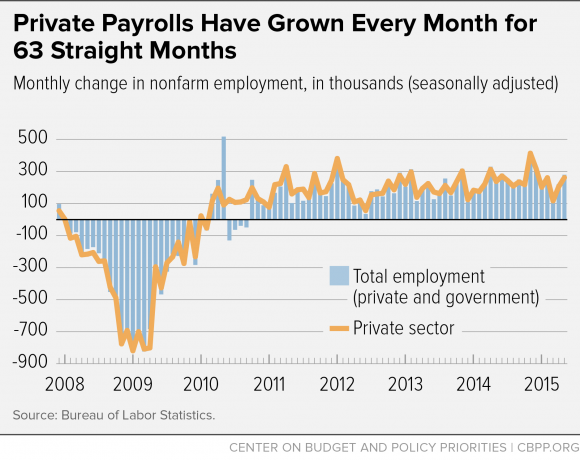
Long-Term
Unemployment Near Historic Highs
CBPP 4/14
)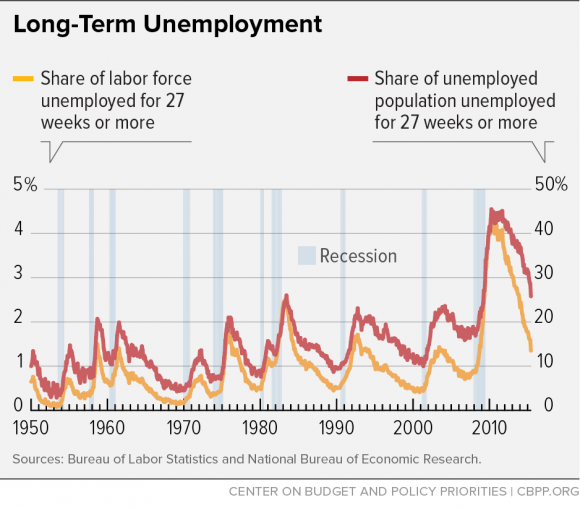
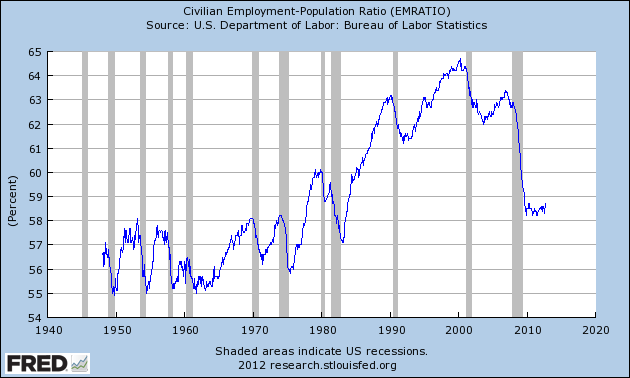
Missing
Jobs: How many jobs
we should have had
"We
lost 8,695,000 jobs in the downturn, but we have since gained
back 7,844,000, so we are now “only” 851,000 jobs
below where we were when the recession began
in December 2007." --Heidi
Shierholz, EPI
Labor
Force Participation Rate
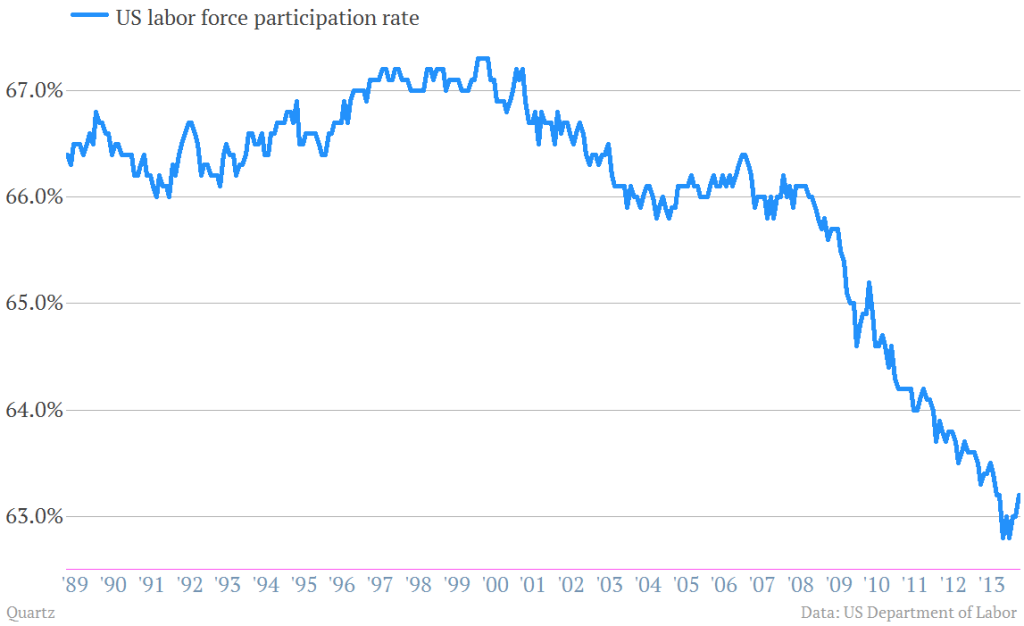
GDP
Fell Far Below What the Economy
Was Capable of Producing
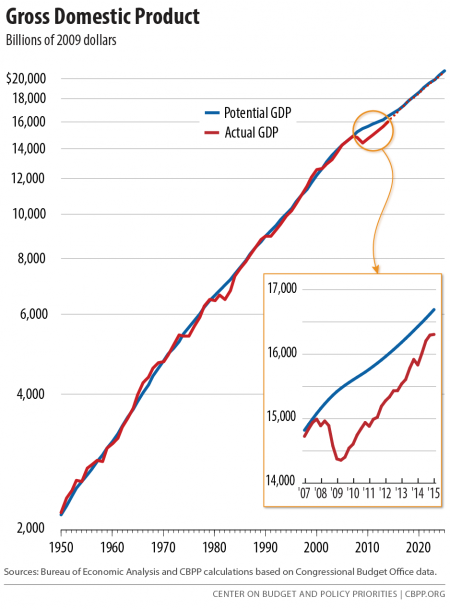
+"The
number of job openings (not seasonally adjusted) increased over
the year for total nonfarm and private but decreased for government.
Over the year, the number job openings increased in several industries
while it decreased in real estate and rental and leasing and in
federal government. The Midwest and West regions experienced an
increase in the number of job opernings over the 12 months ending
in January.” (http://www.bls.gov/news.release/pdf/jolts.pdf)
|

